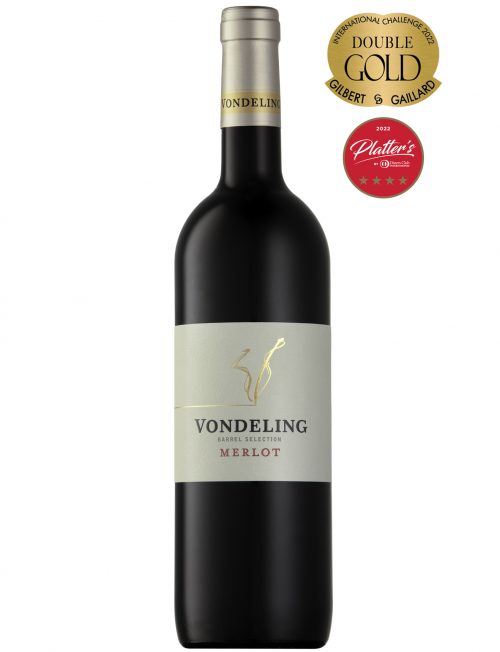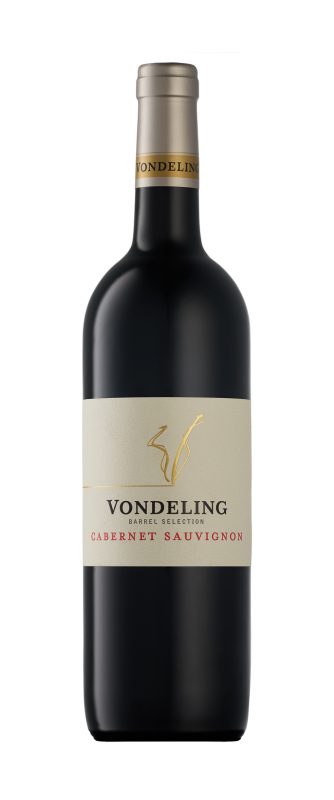-
 A Hidden Gem from Babiana Our 2023 Grenache Blanc is a true "stolen" treasure, a secret ingredient we typically reserve for our signature Babiana blend. This year, we had just a little extra Grenache Blanc than usual, and we couldn’t resist sharing this unique expression with our loyal members. A wine that’s normally kept under wraps, it’s now available as a limited release to those who appreciate the rare and special moments in winemaking. Winemaking Story The grapes were whole-bunch pressed and fermented in egg- shaped concrete tanks using wild yeast, allowing the wine to develop naturally and express the true character of its vineyard. A partial malolactic fermentation softens any harsh acidity, while extended maturation on the lees contributes to a rich, creamy texture and enhanced body. The result is a wine with depth, length, and complexity, all while maintaining a vibrant freshness. TASTING NOTES This Grenache Blanc opens with bright, enticing aromas of fresh peach, citrus blossoms, and a touch of white floral notes. On the palate, the wine is rich and textured, with layers of stone fruit and subtle citrus that give it a lively character. The mouthfeel is creamy and smooth, supported by a refreshing, clean finish. The combination of bright fruit and smooth texture makes this wine both elegant and easy to enjoy, with a lingering minerality that adds a touch of intrigue. 2023 Analysis pH 3.44 Total Acidity 6.1 g/l Residual Sugar 3.3 g/l Alcohol 14.29 %
A Hidden Gem from Babiana Our 2023 Grenache Blanc is a true "stolen" treasure, a secret ingredient we typically reserve for our signature Babiana blend. This year, we had just a little extra Grenache Blanc than usual, and we couldn’t resist sharing this unique expression with our loyal members. A wine that’s normally kept under wraps, it’s now available as a limited release to those who appreciate the rare and special moments in winemaking. Winemaking Story The grapes were whole-bunch pressed and fermented in egg- shaped concrete tanks using wild yeast, allowing the wine to develop naturally and express the true character of its vineyard. A partial malolactic fermentation softens any harsh acidity, while extended maturation on the lees contributes to a rich, creamy texture and enhanced body. The result is a wine with depth, length, and complexity, all while maintaining a vibrant freshness. TASTING NOTES This Grenache Blanc opens with bright, enticing aromas of fresh peach, citrus blossoms, and a touch of white floral notes. On the palate, the wine is rich and textured, with layers of stone fruit and subtle citrus that give it a lively character. The mouthfeel is creamy and smooth, supported by a refreshing, clean finish. The combination of bright fruit and smooth texture makes this wine both elegant and easy to enjoy, with a lingering minerality that adds a touch of intrigue. 2023 Analysis pH 3.44 Total Acidity 6.1 g/l Residual Sugar 3.3 g/l Alcohol 14.29 % -
 Club Collection Sauvignon Blanc 2023 A Final Tribute to a Legendary Vine The 2023 vintage of our Old Vine Sauvignon Blanc is the final release from the Herb Block, a plot that has produced exceptional fruit since its planting in 1983. As we bid farewell to these legendary vines, we crafted a wine that truly honors their legacy—one that’s as unique and complex as the vines themselves.This limited release is a final homage to a block of old vines that has given us so much over the years. It’s a wine for collectors, for those who appreciate rarity and the artistry of exceptional viticulture. VINIFICATION To bring out the best of this remarkable fruit, the grapes were whole-bunch pressed into egg-shaped concrete tanks, where wild yeast fermentation began naturally. This unique approach allows the wine to capture a sense of place, while minimizing the influence of overbearing fruitiness. A partial malolactic fermentation softens the acidity, while extended maturation on the lees imparts layers of creaminess and body, resulting in a wine with impressive length and texture. TASTING NOTES This wine opens with fresh aromas of ripe kiwi fruit and delicate apple blossoms, creating a fragrant and inviting nose. On the palate, the wine reveals a rich, textural mouthfeel—thanks to the extended lees contact—balanced by gentle tropical fruit notes. The fruit is restrained yet vibrant, offering a harmonious blend of bright citrus and subtle tropical nuances. A lovely creaminess coats the palate, adding depth and elegance, while the finish is long, smooth, and refreshingly clean. Analysis pH 3.47 Total Acidity 6.2 g/l Residual Sugar 3.6 g/l Alcohol 14.32 % DOWNLOAD TASTING NOTES: 2023
Club Collection Sauvignon Blanc 2023 A Final Tribute to a Legendary Vine The 2023 vintage of our Old Vine Sauvignon Blanc is the final release from the Herb Block, a plot that has produced exceptional fruit since its planting in 1983. As we bid farewell to these legendary vines, we crafted a wine that truly honors their legacy—one that’s as unique and complex as the vines themselves.This limited release is a final homage to a block of old vines that has given us so much over the years. It’s a wine for collectors, for those who appreciate rarity and the artistry of exceptional viticulture. VINIFICATION To bring out the best of this remarkable fruit, the grapes were whole-bunch pressed into egg-shaped concrete tanks, where wild yeast fermentation began naturally. This unique approach allows the wine to capture a sense of place, while minimizing the influence of overbearing fruitiness. A partial malolactic fermentation softens the acidity, while extended maturation on the lees imparts layers of creaminess and body, resulting in a wine with impressive length and texture. TASTING NOTES This wine opens with fresh aromas of ripe kiwi fruit and delicate apple blossoms, creating a fragrant and inviting nose. On the palate, the wine reveals a rich, textural mouthfeel—thanks to the extended lees contact—balanced by gentle tropical fruit notes. The fruit is restrained yet vibrant, offering a harmonious blend of bright citrus and subtle tropical nuances. A lovely creaminess coats the palate, adding depth and elegance, while the finish is long, smooth, and refreshingly clean. Analysis pH 3.47 Total Acidity 6.2 g/l Residual Sugar 3.6 g/l Alcohol 14.32 % DOWNLOAD TASTING NOTES: 2023 -
Out of stock
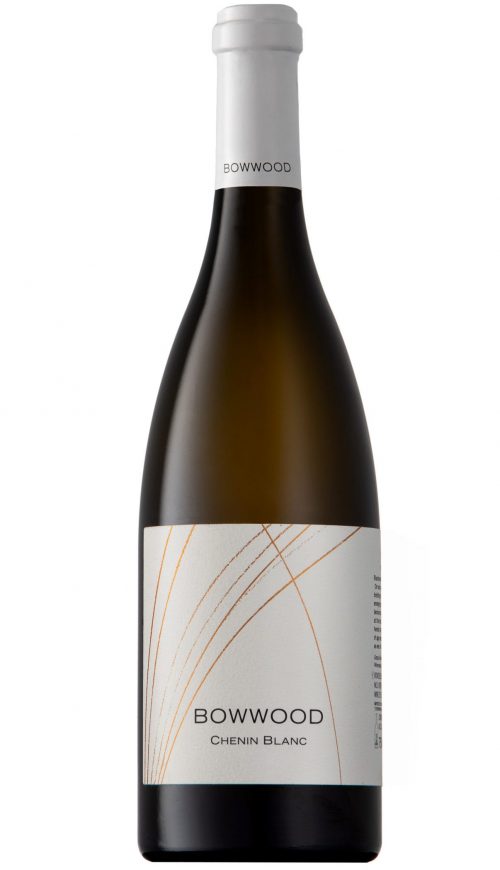 (100% Chenin Blanc) VINEYARDS This wine is made from a single, site-specific vineyard, planted in ancient granitic soils. It’s the highest vineyard on Vondeling and offers magnificent views of our beautiful Voor Paardeberg region. The elevation of the vines, as well as the steepness of the slope and a Southfacing aspect, ensure that this is our coolest location. The vineyard has poor vigour and the vines are shy yielding. This ensures tiny berries with concentrated flavour and vibrant acidity. VINIFICATION The grapes are hand-picked in mid-February with a ripeness of 23.5 Balling. Each bunch is pre-chilled before being whole bunch pressed. The juice remains unsettled and is transferred immediately to French Oak barrels for fermentation. At no stage is yeast or acid added and the “Dirty juice” acts as a nutrient source for the indigenous yeast. It also imparts considerable structure and gives the wine its golden appearance. During the wine’s winter maturation on the gross lees, it normally undergoes a high degree of Malolactic fermentation. This process softens the wine and ensures the harmonious integration of the oak. After winter, the finest barrels are selected, racked and returned for an additional 6 months in barrel. In January, the barrels are screened a second time and the chosen few are prepared for bottling. Due to the fullness and structure of this wine, we insist on a minimum of 9 months rest in bottle before release for purchase. FURTHER REMARKS The Bowwood motto is to produce singular, sight-specific wines that exemplify not only the best examples of their type in South Africa but of those of the world. Special attention is given to how the wine will mature over time and we highly recommend additional cellaring to release the wine’s full potential. TASTING NOTES & CELLARING & FOOD PAIRING Light dances through this wine’s bright, gold leaf colour. It captures, bends and reflects with the same hypnotic rhythm as a fresh mountain stream in the late light of summer. A cerebral experience, the wine is initially timid on the nose, but soon explodes kaleidoscopically in the back of the brain. Delicate apricot, yellow pear and cut straw aromas are fabulously supported by denser greengage, crushed cumin, raw almond and wild celery. The palate is luxurious and full, with a chalky dryness and vast savoury spectrum. Its mineral freshness showcases honeyed tangerine, roasted corn, ripe quince and sweet cashew. Savoury notes include freshly minced bay leaf and fine ground nutmeg. We recommend this wine be paired with nut crusted swordfish and saffron infused risotto or crispy, shredded duck on spring onion pancakes with tomato salsa. Accolades 2019 Vintage: 2022 Platter's Guide - 4.5 Stars 2022 Wine Cellar - 93pts 2022 Gilbert Gaillard - Double Gold (90pts) 2021 Winemag - 87pts 2021 Tim Atkin - 90pts 2021 Platter's Guide - 4.5 Stars 2020 Winemag 93 Points Analysis pH 3.6 Total Acidity 5.3 g/l Residual Sugar 4.4 g/l Alcohol 13.8 % Download Tasting Sheet
(100% Chenin Blanc) VINEYARDS This wine is made from a single, site-specific vineyard, planted in ancient granitic soils. It’s the highest vineyard on Vondeling and offers magnificent views of our beautiful Voor Paardeberg region. The elevation of the vines, as well as the steepness of the slope and a Southfacing aspect, ensure that this is our coolest location. The vineyard has poor vigour and the vines are shy yielding. This ensures tiny berries with concentrated flavour and vibrant acidity. VINIFICATION The grapes are hand-picked in mid-February with a ripeness of 23.5 Balling. Each bunch is pre-chilled before being whole bunch pressed. The juice remains unsettled and is transferred immediately to French Oak barrels for fermentation. At no stage is yeast or acid added and the “Dirty juice” acts as a nutrient source for the indigenous yeast. It also imparts considerable structure and gives the wine its golden appearance. During the wine’s winter maturation on the gross lees, it normally undergoes a high degree of Malolactic fermentation. This process softens the wine and ensures the harmonious integration of the oak. After winter, the finest barrels are selected, racked and returned for an additional 6 months in barrel. In January, the barrels are screened a second time and the chosen few are prepared for bottling. Due to the fullness and structure of this wine, we insist on a minimum of 9 months rest in bottle before release for purchase. FURTHER REMARKS The Bowwood motto is to produce singular, sight-specific wines that exemplify not only the best examples of their type in South Africa but of those of the world. Special attention is given to how the wine will mature over time and we highly recommend additional cellaring to release the wine’s full potential. TASTING NOTES & CELLARING & FOOD PAIRING Light dances through this wine’s bright, gold leaf colour. It captures, bends and reflects with the same hypnotic rhythm as a fresh mountain stream in the late light of summer. A cerebral experience, the wine is initially timid on the nose, but soon explodes kaleidoscopically in the back of the brain. Delicate apricot, yellow pear and cut straw aromas are fabulously supported by denser greengage, crushed cumin, raw almond and wild celery. The palate is luxurious and full, with a chalky dryness and vast savoury spectrum. Its mineral freshness showcases honeyed tangerine, roasted corn, ripe quince and sweet cashew. Savoury notes include freshly minced bay leaf and fine ground nutmeg. We recommend this wine be paired with nut crusted swordfish and saffron infused risotto or crispy, shredded duck on spring onion pancakes with tomato salsa. Accolades 2019 Vintage: 2022 Platter's Guide - 4.5 Stars 2022 Wine Cellar - 93pts 2022 Gilbert Gaillard - Double Gold (90pts) 2021 Winemag - 87pts 2021 Tim Atkin - 90pts 2021 Platter's Guide - 4.5 Stars 2020 Winemag 93 Points Analysis pH 3.6 Total Acidity 5.3 g/l Residual Sugar 4.4 g/l Alcohol 13.8 % Download Tasting Sheet -
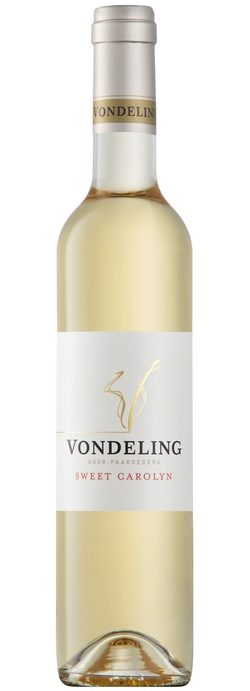 (100% Muscat de Frontignan) VINEYARDS This wine is made from a single vineyard of Muscat d’Frontignan. The winemaking begins in the vineyard. When the acidity and sugar are in perfect harmony, the stem of each bunch is individually crimped to isolate the bunch from the vine. The crimping process stops the supply of water to the bunch, causing the berries to desiccate on the vine. Crimping is done before the grapes are 100% ripe and still high in natural acidity. The crimping process concentrates the sugar and the acidity of the berries and takes up to two weeks. The grapes are naturally protected from the sun by the vine canopy and air movement across the berries stops moulds and fungi from forming while they are drying. Finally, the fruit is ready for picking. VINIFICATION The dried grapes are hand-picked and chilled overnight. They are then destemmed, but not crushed, directly to open top fermenters. Here the berries are fermented much like a red wine, with periodic punch downs, to extract all the syrupy juice from inside. This method adds structure to the wine and the light tannins help to preserve fruity freshness. After approximately one week on the skins, they are pressed, and fermentation is completed in tank. Fermentation stops naturally when the combination of high acidity, increasing alcohol and concentrated sugar finally becomes too inhibitory for the yeast. The wine is aged for 11 months on the gross lees before it is bottled. TASTING NOTES & CELLARING & FOOD PAIRING The wine displays a golden to light amber colour. It has a perfumed nose of bright pineapple, ripe apricot, honeyed marmalade and seductive rose petal. These heady aromas are supported by orange blossom, jasmine and wild rosemary. The nose carries through to the taste, where the mouth-watering sweetness is cut by a tangy acidity, which ensures a persistent and refreshing finish. This is a naturally fermented and unfortified wine, and allows for many delightful treats, which may incl. savoury duck liver pate, sweet spice-laced puddings and traditional soft cheeses. Serve chilled and don’t wait for dessert. Accolades 2022 Platter’s Guide – 4.5 Stars
(100% Muscat de Frontignan) VINEYARDS This wine is made from a single vineyard of Muscat d’Frontignan. The winemaking begins in the vineyard. When the acidity and sugar are in perfect harmony, the stem of each bunch is individually crimped to isolate the bunch from the vine. The crimping process stops the supply of water to the bunch, causing the berries to desiccate on the vine. Crimping is done before the grapes are 100% ripe and still high in natural acidity. The crimping process concentrates the sugar and the acidity of the berries and takes up to two weeks. The grapes are naturally protected from the sun by the vine canopy and air movement across the berries stops moulds and fungi from forming while they are drying. Finally, the fruit is ready for picking. VINIFICATION The dried grapes are hand-picked and chilled overnight. They are then destemmed, but not crushed, directly to open top fermenters. Here the berries are fermented much like a red wine, with periodic punch downs, to extract all the syrupy juice from inside. This method adds structure to the wine and the light tannins help to preserve fruity freshness. After approximately one week on the skins, they are pressed, and fermentation is completed in tank. Fermentation stops naturally when the combination of high acidity, increasing alcohol and concentrated sugar finally becomes too inhibitory for the yeast. The wine is aged for 11 months on the gross lees before it is bottled. TASTING NOTES & CELLARING & FOOD PAIRING The wine displays a golden to light amber colour. It has a perfumed nose of bright pineapple, ripe apricot, honeyed marmalade and seductive rose petal. These heady aromas are supported by orange blossom, jasmine and wild rosemary. The nose carries through to the taste, where the mouth-watering sweetness is cut by a tangy acidity, which ensures a persistent and refreshing finish. This is a naturally fermented and unfortified wine, and allows for many delightful treats, which may incl. savoury duck liver pate, sweet spice-laced puddings and traditional soft cheeses. Serve chilled and don’t wait for dessert. Accolades 2022 Platter’s Guide – 4.5 Stars2017 Vintage:
2020 Platter’s Guide – 4.5 Stars 2018 James Suckling SA Report 90 points
Analysis pH 3.38 Total Acidity 6.4 g/l Residual Sugar 177.6 g/l Alcohol 12.38 % Download Tasting Sheet -
 (60% Chenin Blanc, 23% Viognier, 11% Grenache Blanc & 6% Roussanne) It is named in honour of Babiana Noctiflora, a rare species of fynbos found only on the Paardeberg Mountain. It has a delicate yellow flower that releases its scent in the evenings to attract a scarce moth for pollination. The Syngrapha Circumflexa of the Noctuidae moth family is also known as an Owlet moth. THE NAME BABIANA Babiana Noctiflora belongs to the Iris family. The name Babiana is derived from the Dutch ‘baviaantje’, meaning 'little baboon', because baboons were seen preferentially eating the corms of these plants. This species has lost its habitat to vineyards and fruit orchards in the past, but at Vondeling we conserve this endangered species VINEYARDS Made predominantly from Chenin blanc, picked from a single block of old vines (planted in 1987). Their age and low yield ensure consistent quality and concentration, which is why it form the backbone of our blend. The fullness of the Chenin is tempered by the verve and high aromatics of the Grenache Blanc, Viognier, and Roussanne. VINIFICATION All grapes are hand-picked at optimum ripeness and refrigerated for 24hrs before being processed. The Chenin is whole bunch press and no Sulphur added to promote wild yeast development. The unsettled juice is then rapidly transferred to barrel for natural fermentation. Although a nerve-racking process, this method lends structure, complexity, and longevity to the wine. The Grenache Blanc, Roussanne, and Viognier are destemmed and cold fermented for 8 days on the skins before being basket pressed directly to barrel to complete fermentation. The wine undergoes full malolactic fermentation and is matured 12 months on the lees before being racked, blended, and bottled TASTING NOTES & CELLARING & FOOD PAIRING The wine has a bright yellow colour. It has a smoky and toasty nose with hints of stone fruit. The palate is full and creamy, with well-integrated acidity followed by vanilla on the aftertaste. Well use of oak allows for some subtle toasty notes on the palate. This serious and complex wine pairs well with rabbit in white wine sauce and shallots or simple, aromatic Asian dishes and rich seafood. Drink through 2027 ACCOLADES 2020 Vintage: 2021 Tim Atkin 91 Points 2022 Platter’s Guide – 4.5 Stars (91pts) 2021 Vintage: 2022 Gilbard & Gaillard-Double Gold (92Pts) 2023 Platter's Guide-4.5 Stars (93 pts) Analysis pH 3.34 Total Acidity 5.8 g/l Residual Sugar 3.6 g/l Alcohol 13.28 % Download Tasting Sheet
(60% Chenin Blanc, 23% Viognier, 11% Grenache Blanc & 6% Roussanne) It is named in honour of Babiana Noctiflora, a rare species of fynbos found only on the Paardeberg Mountain. It has a delicate yellow flower that releases its scent in the evenings to attract a scarce moth for pollination. The Syngrapha Circumflexa of the Noctuidae moth family is also known as an Owlet moth. THE NAME BABIANA Babiana Noctiflora belongs to the Iris family. The name Babiana is derived from the Dutch ‘baviaantje’, meaning 'little baboon', because baboons were seen preferentially eating the corms of these plants. This species has lost its habitat to vineyards and fruit orchards in the past, but at Vondeling we conserve this endangered species VINEYARDS Made predominantly from Chenin blanc, picked from a single block of old vines (planted in 1987). Their age and low yield ensure consistent quality and concentration, which is why it form the backbone of our blend. The fullness of the Chenin is tempered by the verve and high aromatics of the Grenache Blanc, Viognier, and Roussanne. VINIFICATION All grapes are hand-picked at optimum ripeness and refrigerated for 24hrs before being processed. The Chenin is whole bunch press and no Sulphur added to promote wild yeast development. The unsettled juice is then rapidly transferred to barrel for natural fermentation. Although a nerve-racking process, this method lends structure, complexity, and longevity to the wine. The Grenache Blanc, Roussanne, and Viognier are destemmed and cold fermented for 8 days on the skins before being basket pressed directly to barrel to complete fermentation. The wine undergoes full malolactic fermentation and is matured 12 months on the lees before being racked, blended, and bottled TASTING NOTES & CELLARING & FOOD PAIRING The wine has a bright yellow colour. It has a smoky and toasty nose with hints of stone fruit. The palate is full and creamy, with well-integrated acidity followed by vanilla on the aftertaste. Well use of oak allows for some subtle toasty notes on the palate. This serious and complex wine pairs well with rabbit in white wine sauce and shallots or simple, aromatic Asian dishes and rich seafood. Drink through 2027 ACCOLADES 2020 Vintage: 2021 Tim Atkin 91 Points 2022 Platter’s Guide – 4.5 Stars (91pts) 2021 Vintage: 2022 Gilbard & Gaillard-Double Gold (92Pts) 2023 Platter's Guide-4.5 Stars (93 pts) Analysis pH 3.34 Total Acidity 5.8 g/l Residual Sugar 3.6 g/l Alcohol 13.28 % Download Tasting Sheet -
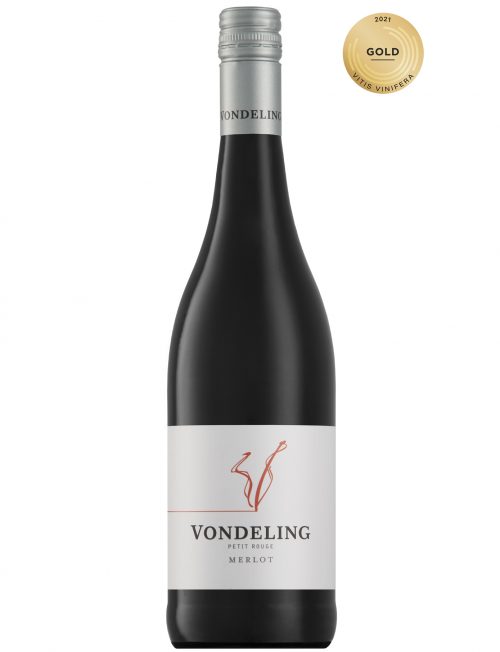 (100% Merlot) VINEYARDS The Merlot vineyard used in this wine is planted in a combination of well-weathered granite soils and beautiful “koffie klip” (shale) slopes. They are South-West facing slopes, which helps keep temperatures moderate. Optimum ripeness was at 24°B, with vibrant flavours of ripe, red fruits. Handpicking, under the watchful eye of the winemaker, ensures that only the finest fruit is delivered to the cellar. VINIFICATION The grapes are destemmed, but not crushed and whole berry fermentation at cool temperatures is practiced, to ensure a broad spectrum of bright fruit and spiciness without heavy tannin extraction. After fermentation, the wine is transferred to old 300Lt French oak barrels and the skins are pressed. Malolactic fermentation takes place in the barrel after which the wines are racked, the batches are blended, and the wine prepared to be bottled. TASTING NOTES & CELLARING & FOOD PAIRING The wine displays a bright ruby red colour. It shows a vibrant, fruitfilled aroma of sleek cherries, subtle raspberry, and soft, black pepper. The nose carries through beautifully to the palate and is nicely supported by refined tannins with a smooth finish. A dynamic wine, which can be enjoyed at many levels, but is exceptionally well pared with a traditional South African braai. Alternatively, a Sunday roast is a must. We hope you enjoy it. Accolades 2019 Vintage: 2020 Gold Wine Awards – Gold 2020 Vintage: 2021 Vitis Vinifera (Gold) 2019 Vinatge: 2020 Gold Wine Awards - Gold 2020 Vitis Vinifera Awards - Gold 2023 Platter's Guide -85 Points (Good Value) “Worth twice the price” - Michael Fridjhon Analysis pH 3.61 Total Acidity 5.7 g/l Residual Sugar 4.0 g/l Alcohol 13.72 % Download Tasting Sheet
(100% Merlot) VINEYARDS The Merlot vineyard used in this wine is planted in a combination of well-weathered granite soils and beautiful “koffie klip” (shale) slopes. They are South-West facing slopes, which helps keep temperatures moderate. Optimum ripeness was at 24°B, with vibrant flavours of ripe, red fruits. Handpicking, under the watchful eye of the winemaker, ensures that only the finest fruit is delivered to the cellar. VINIFICATION The grapes are destemmed, but not crushed and whole berry fermentation at cool temperatures is practiced, to ensure a broad spectrum of bright fruit and spiciness without heavy tannin extraction. After fermentation, the wine is transferred to old 300Lt French oak barrels and the skins are pressed. Malolactic fermentation takes place in the barrel after which the wines are racked, the batches are blended, and the wine prepared to be bottled. TASTING NOTES & CELLARING & FOOD PAIRING The wine displays a bright ruby red colour. It shows a vibrant, fruitfilled aroma of sleek cherries, subtle raspberry, and soft, black pepper. The nose carries through beautifully to the palate and is nicely supported by refined tannins with a smooth finish. A dynamic wine, which can be enjoyed at many levels, but is exceptionally well pared with a traditional South African braai. Alternatively, a Sunday roast is a must. We hope you enjoy it. Accolades 2019 Vintage: 2020 Gold Wine Awards – Gold 2020 Vintage: 2021 Vitis Vinifera (Gold) 2019 Vinatge: 2020 Gold Wine Awards - Gold 2020 Vitis Vinifera Awards - Gold 2023 Platter's Guide -85 Points (Good Value) “Worth twice the price” - Michael Fridjhon Analysis pH 3.61 Total Acidity 5.7 g/l Residual Sugar 4.0 g/l Alcohol 13.72 % Download Tasting Sheet -
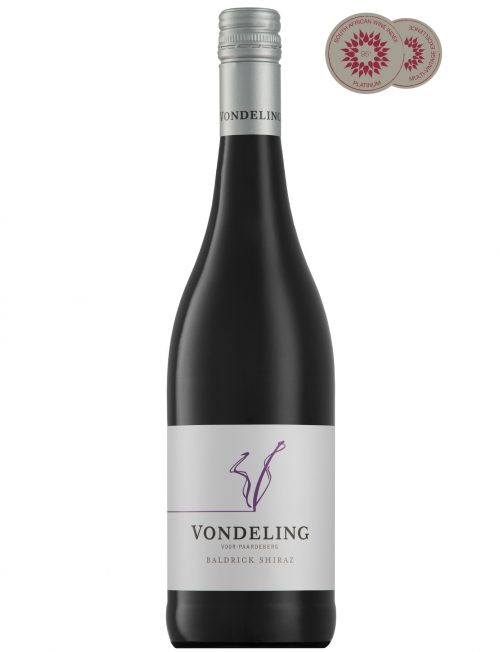 VINEYARDS For this delicious wine, we select the sites and clones which promote greater aromatics and a more accessible palate. The vineyards are planted on ancient, granite-derived soils on the south and southeast-facing slopes. Multiple clones of Shiraz are used to improve the complexity of the final wine. VINIFICATION Our grapes are hand-picked and chilled overnight before being destemmed and placed as whole berries in open-top fermenters. The berry mash is cold-soaked for 48 hours before fermenting spontaneously at 22°C. All fermentation is done by wild yeasts. During fermentation, the wine is mixed by hand and not by pump. Once fermentation is complete, the skins are pressed in a traditional basket press, and the wine is transferred to old 500 L French oak barrels. Malolactic fermentation occurs in the barrel and helps to soften and enhance the natural wine flavours. The wine spends one year in the barrel. TASTING NOTES & CELLARING & FOOD PAIRING The wine has a deep purple colour with flashes of scarlet. Ripe plum and mulberry aromas are uplifted with cherry blossom and violets. The palate is gentle and the tannins fresh but rounded. The aromatics continue into the palate with added blueberry, a hint of roasted black olives, and soft-spoken sweet spice. A versatile, medium-bodied wine, the Baldrick Shiraz will enhance many dishes and occasions. We recommend it with slow-cooked lamb, and mashed potato with caramelized onion gravy Accolades 2019 Vintage: 2021 Gold Wine Awards - Gold 2020: Vintage 2022 Platter’s Guide – 4 Stars 2021:Vintage 2023 Platter's Guide- 4 Stars Analysis pH 3.53 Total Acidity 5.4 g/l Residual Sugar 4.3 g/l Alcohol 13.57 % Download Tasting Sheet
VINEYARDS For this delicious wine, we select the sites and clones which promote greater aromatics and a more accessible palate. The vineyards are planted on ancient, granite-derived soils on the south and southeast-facing slopes. Multiple clones of Shiraz are used to improve the complexity of the final wine. VINIFICATION Our grapes are hand-picked and chilled overnight before being destemmed and placed as whole berries in open-top fermenters. The berry mash is cold-soaked for 48 hours before fermenting spontaneously at 22°C. All fermentation is done by wild yeasts. During fermentation, the wine is mixed by hand and not by pump. Once fermentation is complete, the skins are pressed in a traditional basket press, and the wine is transferred to old 500 L French oak barrels. Malolactic fermentation occurs in the barrel and helps to soften and enhance the natural wine flavours. The wine spends one year in the barrel. TASTING NOTES & CELLARING & FOOD PAIRING The wine has a deep purple colour with flashes of scarlet. Ripe plum and mulberry aromas are uplifted with cherry blossom and violets. The palate is gentle and the tannins fresh but rounded. The aromatics continue into the palate with added blueberry, a hint of roasted black olives, and soft-spoken sweet spice. A versatile, medium-bodied wine, the Baldrick Shiraz will enhance many dishes and occasions. We recommend it with slow-cooked lamb, and mashed potato with caramelized onion gravy Accolades 2019 Vintage: 2021 Gold Wine Awards - Gold 2020: Vintage 2022 Platter’s Guide – 4 Stars 2021:Vintage 2023 Platter's Guide- 4 Stars Analysis pH 3.53 Total Acidity 5.4 g/l Residual Sugar 4.3 g/l Alcohol 13.57 % Download Tasting Sheet -
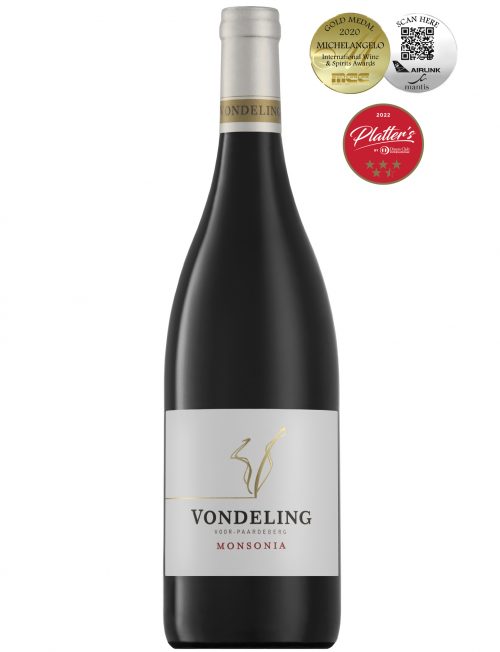 (Shiraz 60%, Mourvédre 23%, Carignan 10% & Grenache Noir 7%) Vondeling Monsonia is named after Monsonia Speciosa, a very rare species of fynbos (vegetation type occurring in the Western Cape region of South Africa) found in the Paardeberg mountain, the home of Vondeling wines. THE NAME MONSONIA The flower was named after Lady Anne Monson, the great-grandchild of King Charles II. Controversially, her first marriage was dissolved, due to the birth of an illegitimate child but she soon remarried Colonel George Monson of the Indian Military. She was known as a “remarkable lady botanist” and was instrumental in translating Linnaeus’s famous “Philosophia Botanica”. On her way to Calcutta, she visited the Cape of Good Hope and accompanied seasoned collector of South African plants, Carl Peter Thunberg, on several expeditions around the Cape. In 1774, he named the Monsonia species of plants after her. VINEYARDS The Shiraz vines grow in ancient, well-weathered granite soils on southeast-facing slopes – ideal for our warm South African climate. In total, six clones of Shiraz can be found on the farm and only the best performing clones go into the final blend. Typically, each clone contributes different characteristics to the wine and the different blocks are picked at varying degrees of ripeness, best suited to their character. The Mourvedre, Carignan, and Grenache are best adapted to hot sun and are grown as bush vines on North East-facing slopes. Highly selective hand-picking guarantees that only the best fruit arrives at the winery. VINIFICATION After being chilled overnight, bunches are partially destemmed, but not crushed, and whole berry fermentation takes place in open-top fermentation tanks. An initial two-day period of cold soaking is applied before wild yeast fermentation is allowed to commence. During fermentation, hand plunging, commonly known as "punch downs" is the method of mixing and extraction. After fermentation, the wine is pressed in a traditional boutique-size basket press. All wine is then transferred directly to barrel where malolactic fermentation takes place. Only large format French oak barrels are used, with about one-third new and the rest 2nd and 3rd fill. The wine is allowed to mature for 16 months before a final barrel selection, blending and bottling takes place TASTING NOTES & CELLARING & FOOD PAIRING Vibrant and clear charcoal red with beautifully viscous legs clinging to the glass. Each grape component vies for attention in this kaleidoscopic bouquet. Sweet Lillies and rose-petal Turkish delight from the Grenache. Plush black currant and blueberries from the Carignan. All wrapped in a velvety blanket of red berries and soft spice from the Shiraz. A smooth, velvety palate devoid of harsh or grippy tannin. Red cherry candy and sweet plumb at the fore with a soft plush center and subtle spice with roasted coconut at the end. Well paired with a mature steak, barbequed over a hotbed of coals and served with sauteed baby mushrooms, or try a hearty, slow-cooked pork belly with root vegetables and tomatoes. Accolades 2016 Vinatge:
(Shiraz 60%, Mourvédre 23%, Carignan 10% & Grenache Noir 7%) Vondeling Monsonia is named after Monsonia Speciosa, a very rare species of fynbos (vegetation type occurring in the Western Cape region of South Africa) found in the Paardeberg mountain, the home of Vondeling wines. THE NAME MONSONIA The flower was named after Lady Anne Monson, the great-grandchild of King Charles II. Controversially, her first marriage was dissolved, due to the birth of an illegitimate child but she soon remarried Colonel George Monson of the Indian Military. She was known as a “remarkable lady botanist” and was instrumental in translating Linnaeus’s famous “Philosophia Botanica”. On her way to Calcutta, she visited the Cape of Good Hope and accompanied seasoned collector of South African plants, Carl Peter Thunberg, on several expeditions around the Cape. In 1774, he named the Monsonia species of plants after her. VINEYARDS The Shiraz vines grow in ancient, well-weathered granite soils on southeast-facing slopes – ideal for our warm South African climate. In total, six clones of Shiraz can be found on the farm and only the best performing clones go into the final blend. Typically, each clone contributes different characteristics to the wine and the different blocks are picked at varying degrees of ripeness, best suited to their character. The Mourvedre, Carignan, and Grenache are best adapted to hot sun and are grown as bush vines on North East-facing slopes. Highly selective hand-picking guarantees that only the best fruit arrives at the winery. VINIFICATION After being chilled overnight, bunches are partially destemmed, but not crushed, and whole berry fermentation takes place in open-top fermentation tanks. An initial two-day period of cold soaking is applied before wild yeast fermentation is allowed to commence. During fermentation, hand plunging, commonly known as "punch downs" is the method of mixing and extraction. After fermentation, the wine is pressed in a traditional boutique-size basket press. All wine is then transferred directly to barrel where malolactic fermentation takes place. Only large format French oak barrels are used, with about one-third new and the rest 2nd and 3rd fill. The wine is allowed to mature for 16 months before a final barrel selection, blending and bottling takes place TASTING NOTES & CELLARING & FOOD PAIRING Vibrant and clear charcoal red with beautifully viscous legs clinging to the glass. Each grape component vies for attention in this kaleidoscopic bouquet. Sweet Lillies and rose-petal Turkish delight from the Grenache. Plush black currant and blueberries from the Carignan. All wrapped in a velvety blanket of red berries and soft spice from the Shiraz. A smooth, velvety palate devoid of harsh or grippy tannin. Red cherry candy and sweet plumb at the fore with a soft plush center and subtle spice with roasted coconut at the end. Well paired with a mature steak, barbequed over a hotbed of coals and served with sauteed baby mushrooms, or try a hearty, slow-cooked pork belly with root vegetables and tomatoes. Accolades 2016 Vinatge:2020 Platter’s Guide – 4.5 Stars 2019 Michelangelo – Gold 2019 Winemag - 93pts
2018 Vintage:2021 Platter’s Guide – 4.5 Stars / 94 Points 2020 Michelangelo - Gold 2022 Tim Atkin 90 Pts 2022 Michelangelo Awards - Gold 2023 Platter’s Guide 4,5 Stars (92 Pts)
2019 Vintage: 2024 Platter’s Guide 4.5 Stars (92 Pts) Analysis pH 3.50 Total Acidity 5.3 g/l Residual Sugar 3.3 g/l Alcohol 13.72 % Download Tasting Sheet -
 VINEYARDS Made primarily from cold-pressed Merlot, the anchor vineyard for this delicious wine is over 20yrs old. Located on a granite spur in the foothills of the Paardeberg Mountain, the berries are well exposed to sunlight. Exposure to sunlight is essential to eliminate green flavours from the fruit. The soil has a high clay percentage, and this lends softness and volume to the wine. Great care is taken to ensure that the vines do not bear too great a crop or suffer from drought. This is done through green cropping of the vines and micro-irrigation. Both practices help to preserve the natural acidity, freshness and vibrancy of the grape aromas. VINIFICATION Grapes are picked at optimum ripeness in the early hours of the morning before being destemmed and chilled before pressing. This short route, from vine to press, ensures minimal degradation of the fruit aromas and a very moderate extraction of colour. All free-run juice is kept separate from the colour fraction to ensure a deliciously subtle salmon colour. The juice is cold settled to remove any coarseness and fermentation is done in stainless steel tanks. The wine is 100% unoaked. A six-month period of maturation on the yeast lees promotes richness and complexity. TASTING NOTES & CELLARING & FOOD PAIRING The wine has a delightfully delicate, salmon pink colour. It displays a bright bouquet of Turkish delight, raspberry coulis, passion fruit, and taught grapefruit. The palate is well rounded but refreshingly vibrant, packed with red berry flavours, seductive floral undertones, and a pleasant citrus twist. Pair with spicy Thai prawns, grilled Portuguese sardines, or a fresh tomato, feta and pomegranate salad. Accolades 2023 Platter’s Guide-3.5 stars (85Pts) 2023 Vintage: 2023 Gold Wine Awards-Gold 2023 Vitis Vinifera - Gold 2022 Vintage: 2022 Michelangelo - Gold 2022 Gilbert Gaillard -Gold 2021 Vintage: 2021 Michelangelo - Gold 2021 Vitis Vinifera - Gold 2021 Rose Rocks - Gold 2020 Vintage: 2020 Rose Rocks - Gold 2020 Vitis Vinifera Awards - Gold Analysis pH 3.47 Total Acidity 5.5 g/l Residual Sugar 3.6 g/l Alcohol 12.57 % Download Tasting Sheet
VINEYARDS Made primarily from cold-pressed Merlot, the anchor vineyard for this delicious wine is over 20yrs old. Located on a granite spur in the foothills of the Paardeberg Mountain, the berries are well exposed to sunlight. Exposure to sunlight is essential to eliminate green flavours from the fruit. The soil has a high clay percentage, and this lends softness and volume to the wine. Great care is taken to ensure that the vines do not bear too great a crop or suffer from drought. This is done through green cropping of the vines and micro-irrigation. Both practices help to preserve the natural acidity, freshness and vibrancy of the grape aromas. VINIFICATION Grapes are picked at optimum ripeness in the early hours of the morning before being destemmed and chilled before pressing. This short route, from vine to press, ensures minimal degradation of the fruit aromas and a very moderate extraction of colour. All free-run juice is kept separate from the colour fraction to ensure a deliciously subtle salmon colour. The juice is cold settled to remove any coarseness and fermentation is done in stainless steel tanks. The wine is 100% unoaked. A six-month period of maturation on the yeast lees promotes richness and complexity. TASTING NOTES & CELLARING & FOOD PAIRING The wine has a delightfully delicate, salmon pink colour. It displays a bright bouquet of Turkish delight, raspberry coulis, passion fruit, and taught grapefruit. The palate is well rounded but refreshingly vibrant, packed with red berry flavours, seductive floral undertones, and a pleasant citrus twist. Pair with spicy Thai prawns, grilled Portuguese sardines, or a fresh tomato, feta and pomegranate salad. Accolades 2023 Platter’s Guide-3.5 stars (85Pts) 2023 Vintage: 2023 Gold Wine Awards-Gold 2023 Vitis Vinifera - Gold 2022 Vintage: 2022 Michelangelo - Gold 2022 Gilbert Gaillard -Gold 2021 Vintage: 2021 Michelangelo - Gold 2021 Vitis Vinifera - Gold 2021 Rose Rocks - Gold 2020 Vintage: 2020 Rose Rocks - Gold 2020 Vitis Vinifera Awards - Gold Analysis pH 3.47 Total Acidity 5.5 g/l Residual Sugar 3.6 g/l Alcohol 12.57 % Download Tasting Sheet -
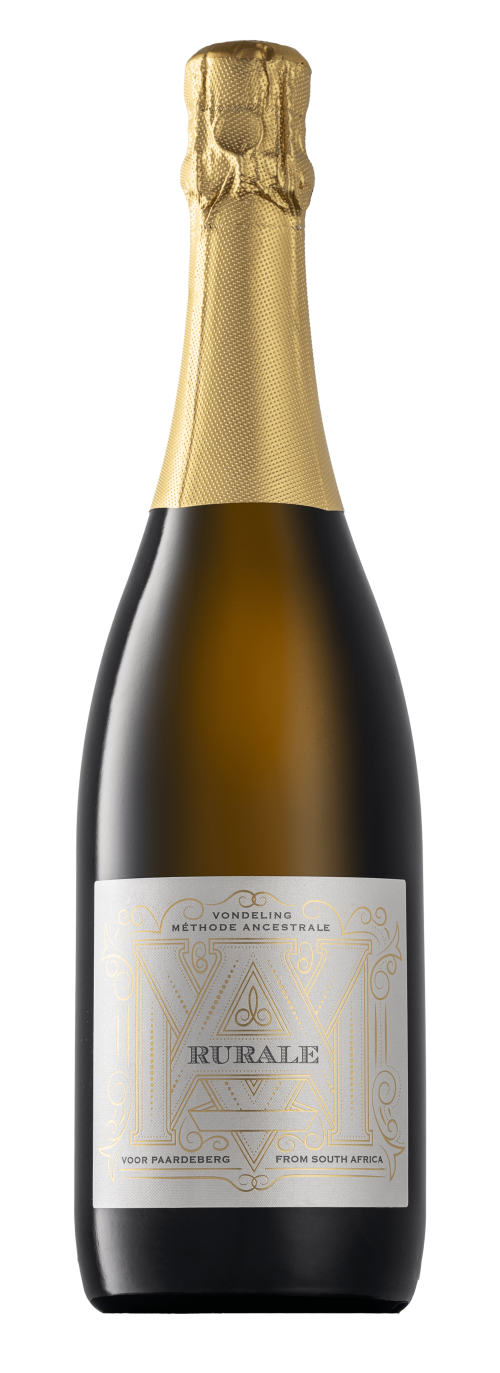 (100% Chardonnay) VINEYARDS Vondeling Rurale is comprised of 100% Chardonnay . The Chardonnay grapes originate from a single block, located on a south-west facing slope on the decomposed granite soils of the Paardeberg Mountain. Unlike Mèthode Cap Classique, Mèthode Ancestrale grapes are harvested with a potential alcohol of 12% (rather than 9%). This promotes a fuller, more rounded pallet with superior fruit expression without compromising on natural vibrancy and freshness. VINIFICATION Natural fermentation begins in a stainless-steel tank and when only a small, but critical amount of sugar remains, the fermenting wine is bottled and capped. Bottling must be done at the precise moment when there is enough remaining sugar to create a healthy, vibrant mousse, but not so much as to cause the bottles to explode. This single, continuous fermentation, using fruit which is approximately three weeks riper than the base wine used to make Mèthode Cap Classique, is what makes Mèthode Ancestrale unique. The wine is matured on its lees for 3 years before riddling and disgorging. Autolysis of the yeast cells increases richness, palate weight and creaminess to the wine. After being hand riddled over a one-month period, it is disgorged and topped using our flagship white blend, Babiana from the 2013 vintage, as an alternative to liqueur d’expedition. The name Rurale is the original name for what was later recognized by the French A.O.C as Mèthode Ancestrale. We love the implication that this is an uncomplicated, yet pure expression of both the grape and its origins. Rurale was the first recognized Mèthode Ancestrale to be produced in South Africa and remains the leader in this category. Vondeling was instrumental in drafting the technical description, which allowed this new category to be recognized in 2014. It is a highly labour-intensive way to produce sparkling wine, and for this reason, only 2750 bottles were produced. All grapes are grown and vinified on Vondeling Farm and Cellar. TASTING NOTES & CELLARING & FOOD PAIRING The wine displays a pale straw colour typical of bubbly that has enjoyed the benefits of extended lees maturation. Tiny, pearl-string bubbles and fine mousse abound. Beautiful aromas of lavender honey, lime, crisp apple with freshly baked pastry and toasted almonds on the nose. The palate is bright and zippy with vibrant acidity and a soft, creamy mouthfeel. Fresh apple appears again along with pears, confected lemon and a long, rich, lingering after taste. Rurale can be paired with smoked salmon, fennel roasted trout or fresh oysters with a squeeze of lemon, salt, and pepper. Accolades: 2018 Vintage: 2021 SA Sparkling Wine Championships – Double Gold 2021 Michelangelo- Gold 2022 Platter Wine Guide 2020 – 4,5 stars (93pts) Analysis: pH 3.42 Total Acidity 7.2 g/l Residual Sugar 1.4 g/l Alcohol 11.36 % Download Tasting Sheet
(100% Chardonnay) VINEYARDS Vondeling Rurale is comprised of 100% Chardonnay . The Chardonnay grapes originate from a single block, located on a south-west facing slope on the decomposed granite soils of the Paardeberg Mountain. Unlike Mèthode Cap Classique, Mèthode Ancestrale grapes are harvested with a potential alcohol of 12% (rather than 9%). This promotes a fuller, more rounded pallet with superior fruit expression without compromising on natural vibrancy and freshness. VINIFICATION Natural fermentation begins in a stainless-steel tank and when only a small, but critical amount of sugar remains, the fermenting wine is bottled and capped. Bottling must be done at the precise moment when there is enough remaining sugar to create a healthy, vibrant mousse, but not so much as to cause the bottles to explode. This single, continuous fermentation, using fruit which is approximately three weeks riper than the base wine used to make Mèthode Cap Classique, is what makes Mèthode Ancestrale unique. The wine is matured on its lees for 3 years before riddling and disgorging. Autolysis of the yeast cells increases richness, palate weight and creaminess to the wine. After being hand riddled over a one-month period, it is disgorged and topped using our flagship white blend, Babiana from the 2013 vintage, as an alternative to liqueur d’expedition. The name Rurale is the original name for what was later recognized by the French A.O.C as Mèthode Ancestrale. We love the implication that this is an uncomplicated, yet pure expression of both the grape and its origins. Rurale was the first recognized Mèthode Ancestrale to be produced in South Africa and remains the leader in this category. Vondeling was instrumental in drafting the technical description, which allowed this new category to be recognized in 2014. It is a highly labour-intensive way to produce sparkling wine, and for this reason, only 2750 bottles were produced. All grapes are grown and vinified on Vondeling Farm and Cellar. TASTING NOTES & CELLARING & FOOD PAIRING The wine displays a pale straw colour typical of bubbly that has enjoyed the benefits of extended lees maturation. Tiny, pearl-string bubbles and fine mousse abound. Beautiful aromas of lavender honey, lime, crisp apple with freshly baked pastry and toasted almonds on the nose. The palate is bright and zippy with vibrant acidity and a soft, creamy mouthfeel. Fresh apple appears again along with pears, confected lemon and a long, rich, lingering after taste. Rurale can be paired with smoked salmon, fennel roasted trout or fresh oysters with a squeeze of lemon, salt, and pepper. Accolades: 2018 Vintage: 2021 SA Sparkling Wine Championships – Double Gold 2021 Michelangelo- Gold 2022 Platter Wine Guide 2020 – 4,5 stars (93pts) Analysis: pH 3.42 Total Acidity 7.2 g/l Residual Sugar 1.4 g/l Alcohol 11.36 % Download Tasting Sheet

